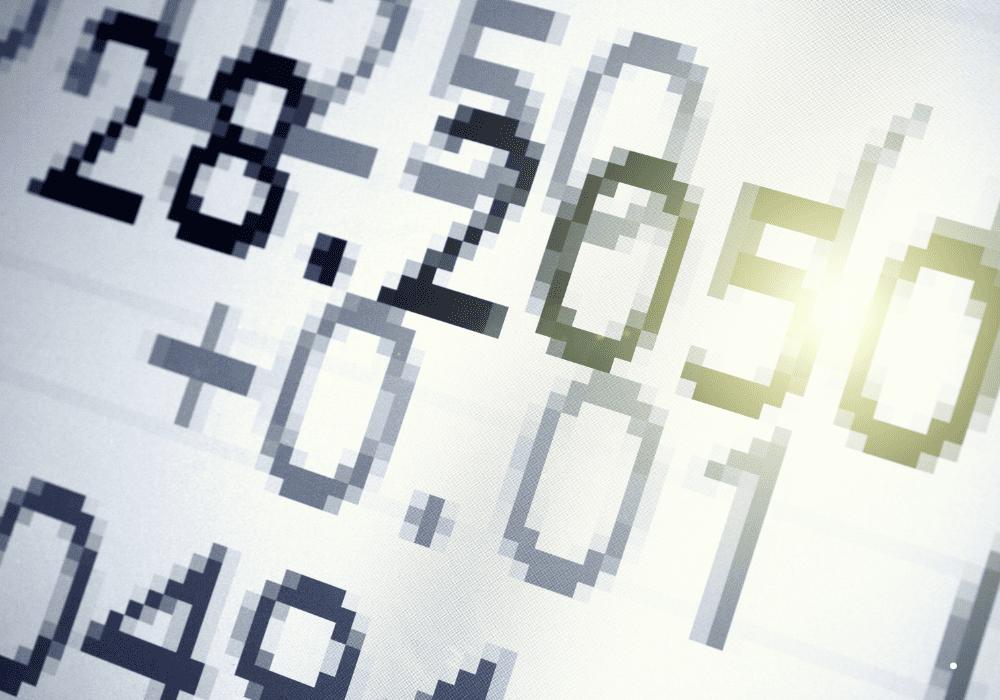If you’ve come across the numbers 89.7 86.01 82 91 and wondered what they mean, you’re not alone. These numbers might seem random, but they can hold significance in various contexts—from education and sports to science and finance. Whether you’re trying to decode these numbers for an academic purpose, an analysis, or just out of curiosity, this article dives into their potential meanings, applications, and significance. By the end, you’ll have a clearer understanding of how these values connect and why they might matter to you.
Introduction: The Context Behind 89.7 86.01 82 91
Numbers like 89.7 86.01 82 91 might seem ordinary, but in various fields, they carry weight. They could represent scores, percentages, statistical data, or even temperature readings, depending on the context. For example, these numbers might be grades in an academic setting, frequency ratings in a broadcasting context, or numerical data in a financial report.
By understanding where these numbers are applied, we can gain insights into their significance and how they might influence decisions in different sectors. Throughout this article, we’ll explore multiple domains to reveal the hidden importance of these figures.
Educational Grading Systems: The Use of 89.7 86.01 82 91 in Academic Performance
In educational contexts, numbers like 89.7 86.01 82 91 often represent percentage scores or grades. They indicate student performance on exams, assignments, or overall course grades. For instance:
- 89.7 might signify an A grade, indicating near-perfect performance.
- 86.01 could also fall in the A range, showing strong academic skills with a few minor errors.
- 82 may fall in the B range, representing solid but slightly less exceptional work.
- 91 could be an outstanding score, often associated with high honors.
Schools and universities use such values to assess and rank students, and these scores can have a lasting impact on one’s academic journey, affecting scholarships, placements, and future opportunities.
Statistical Data Interpretation: Analyzing the Numbers 89.7 86.01 82 91

In statistics, 89.7 86.01 82 91 might represent data points in a dataset. Analysts use these numbers to calculate averages, medians, and standard deviations. For instance, if these were test scores in a classroom of four students, the average score would be:
Average=(89.7+86.01+82+91)4=87.18\text{Average} = \frac{(89.7 + 86.01 + 82 + 91)}{4} = 87.18Average=4(89.7+86.01+82+91)=87.18
This average provides insight into the overall performance level, and further analysis (like variance) can show how spread out these values are from the mean. These techniques are vital in research, economics, and sciences where precise data interpretation is critical.
Sports and Athletic Performance Scores: How These Numbers Relate
In sports, these numbers might reflect scores, rankings, or performance levels in various disciplines. For example:
- 89.7 could be a percentage score in a gymnastics competition, indicating near-perfection.
- 86.01 might be a golf player’s rating, showing consistency and skill.
- 82 could represent a weightlifter’s percentile rank in their category.
- 91 might be the overall score for a marathon runner based on time, consistency, and endurance.
These values help athletes track their progress and compare their performance against others, motivating them to improve and achieve higher rankings.
Financial Markets: Understanding the Significance of 89.7 86.01 82 91 in Stock Trading
In the financial world, 89.7 86.01 82 91 could be stock prices, index values, or performance ratings. For example:
- 89.7 might be the closing price of a company’s stock, indicating its market value.
- 86.01 could be the day’s low, showing a brief dip in trading activity.
- 82 may represent a support level for traders, highlighting the price below which the stock rarely falls.
- 91 might be the resistance level, where prices frequently peak before dropping.
Traders analyze these numbers to make informed decisions on buying, selling, or holding stocks. They use charts and historical data to interpret trends and predict future price movements.
Temperature Measurements: 89.7 86.01 82 91 as Climatic Indicators
If we look at these numbers in the context of weather and climate, they might represent temperature readings in Fahrenheit:
- 89.7°F could be the high temperature on a summer day in a tropical region.
- 86.01°F might indicate the average afternoon temperature in a coastal city.
- 82°F could be a comfortable evening temperature, ideal for outdoor activities.
- 91°F might be the peak afternoon heat in an arid area.
These values are crucial for weather forecasting, helping meteorologists predict trends and advise the public on appropriate safety measures during extreme conditions.
Scientific Data: Using These Values in Research and Analysis
In scientific experiments, 89.7 86.01 82 91 may serve as critical measurements or data points in studies related to chemistry, biology, or physics. They might represent:
- Chemical Concentrations: Levels of compounds in a solution.
- Reaction Times: Measured in seconds during experiments.
- Environmental Readings: Such as humidity or pressure levels.
Accurate data recording and interpretation are essential in scientific research, as these values help scientists verify hypotheses, replicate studies, and advance knowledge in their fields.
Application of 89.7 86.01 82 91 in Weightlifting and Fitness
In fitness, particularly weightlifting, these numbers could be used to denote weights lifted or reps completed:
- 89.7 kg might be the weight a professional lifter presses.
- 86.01 could denote a lifter’s personal record in squats.
- 82 might be the goal weight for bench presses during a competition.
- 91 reps might be the target for a high-intensity workout challenge.
Tracking such metrics helps athletes and fitness enthusiasts measure their progress, set goals, and achieve personal milestones.
Comparing Average Scores Across Different Domains

By examining 89.7 86.01 82 91, we can also look at how these values compare as averages in various domains like academics, sports, and finance:
- In Academics: As grades, they indicate strong performance.
- In Sports: As scores, they represent skill and proficiency.
- In Finance: As prices or values, they show market trends.
Analyzing these numbers side by side provides a comprehensive view of performance across sectors, highlighting consistency and variation.
Calculations and Averages: How These Numbers Relate to Mean and Median Values
Mathematics plays a significant role in interpreting 89.7 86.01 82 91. Calculating their mean, median, and range reveals insights:
- Mean: As shown earlier, the mean of these values is 87.18.
- Median: The median (middle value when sorted) is 87.855.
- Range: The range (difference between the highest and lowest values) is 9.
These calculations help statisticians understand data distribution, identify outliers, and make predictions based on patterns.
Understanding the Cultural Significance of Specific Numbers
Culturally, numbers can have meanings beyond their numeric value. In some cultures:
- 89.7 might symbolize growth or prosperity.
- 86.01 could represent balance and harmony.
- 82 might denote stability.
- 91 could signify leadership or peak achievement.
Exploring these interpretations helps understand how numbers influence cultural perceptions and traditions.
Global Standards and Measurements: A Look at 89.7 86.01 82 91
International standards often use specific numeric codes for guidelines or benchmarks. For example:
- ISO Standards: Numbers like 89.7 might be associated with specific environmental benchmarks.
- Temperature Norms: In global climate studies, these values might represent averages in particular regions.
Such standards ensure consistency across industries, making it easier to maintain quality and safety worldwide.
Patterns and Sequences: Do 89.7 86.01 82 91 Have a Mathematical Connection?
Looking at 89.7 86.01 82 91 from a mathematical perspective, we may explore sequences or patterns. For instance:
- These numbers could form an arithmetic sequence if we calculate their differences.
- Alternatively, they might fit into a geometric pattern when analyzed for multiplicative relationships.
Identifying such connections is key in mathematics, where patterns provide a foundation for deeper analysis and understanding.
Real-Life Examples of 89.7 86.01 82 91: Case Studies and Stories
In real-life scenarios, these numbers could represent critical moments or benchmarks:
- 89.7%: The success rate of a new business strategy.
- 86.01 kg: The weight lifted by an athlete breaking a record.
- 82%: Customer satisfaction in a company’s survey.
- 91: The average score a student needs to secure a scholarship.
These stories illustrate how specific values become significant benchmarks in our lives.
How to Calculate Variance and Standard Deviation Using These Values
Understanding the spread of data involves calculating variance and standard deviation. Using 89.7 86.01 82 91, these formulas provide insight into how much these numbers deviate from the mean, helping analysts predict future outcomes.
Predictive Analysis: Using 89.7 86.01 82 91 in Forecasting Trends
In predictive analysis, past values like 89.7 86.01 82 91 help forecast future trends. Whether in business, weather, or finance, historical data points are crucial for modeling and preparing for possible scenarios.
The Psychology of Numbers: Why These Figures Might Stand Out
The numbers 89.7 86.01 82 91 might stand out due to their close proximity or their relevance in specific contexts. Exploring why certain numbers capture attention offers insights into human psychology and our relationship with quantitative data.
Conclusion: Interpreting and Utilizing 89.7 86.01 82 91 Effectively
Understanding 89.7 86.01 82 91 goes beyond their numeric value. By exploring their significance across domains like education, finance, and fitness, we gain a broader perspective on how numbers impact our decisions and interpretations.
FAQs About 89.7 86.01 82 91
1. What do the numbers 89.7 86.01 82 91 typically represent?
These numbers can represent percentages, scores, prices, or measurements depending on the context—ranging from academics and finance to weather and sports.
2. Are 89.7 86.01 82 91 part of a specific pattern?
They can form arithmetic or geometric patterns depending on how they are analyzed mathematically.
3. How can I interpret 89.7 86.01 82 91 in finance?
In finance, these numbers might indicate stock prices, index values, or support and resistance levels critical for trading.
4. Can 89.7 86.01 82 91 be used in predictive analysis?
Yes, historical data points like these are essential for forecasting trends and outcomes in various fields.
5. How are these numbers used in educational contexts?
In education, they often represent grades or test scores, indicating different levels of academic performance.




